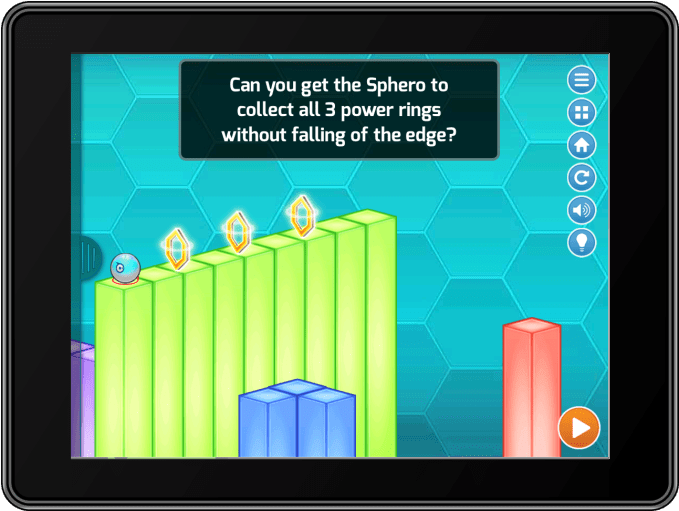Go to Original Article
Tynker, a startup that teaches children the fundamentals of programming by having them build their own games, is now expanding its platform to allow kids to control connected devices, including drones, robots and other “smart home” products, like lighting systems. The company will introduce these capabilities this weekend at the Bay Area Maker Faire in San Mateo, and the additional support is also now rolling out to both the Tynker iPad applications.
The startup, to date, has been focused on making the core concepts around programming more accessible to younger children by offering a number of tutorials and tools they can interact with in order to build games with fun characters through a visual, drag-and-drop interface.
In the past three years, over 23 million kids have begun coding with Tynker and its curriculum is now being used in more than 20,000 schools across the U.S., Canada, U.K., Australia and New Zealand. Around one to two million users log into to Tynker each month, and the company is growing its user base by 500,000 new sign-ups per month, as well.
The company’s iPad app is also preloaded in Apple Retail stores for kids to play with. According to CEO Krishna Vedati, the company will be cash-flow positive this year.
With the additional support for “internet of things” devices, Tynker’s users can now do more than program software environments – they can control real world objects by building apps that fly drones, control toys and command robots. At launch, Tynker will work with a number of popular connected devices including Parrot Drones, Sphero robots, and the Philips Hue/Lux lighting system. But the company says that more integrations are planned for the future.

To work with these devices, Tynker is introducing new code blocks which will allow kids to build apps that control the object in question through a visual interface. To make it easier to get started, Tynker is also offering a handful of pre-coded templates like “Flappy Drone,” which allows kids to program a drone to fly up and down to avoid and dodge real obstacles – like the popular mobile game “Flappy Bird,” along with other templates like Robo Race (a racing game for robots), Stunt Pilot (for getting the drone to do tricks), and others that work with connected lighting systems.
In the future, Vedati says that Tynker will expand to support more drones and remote control toys and will integrate with Apple HomeKit, Parrot Flower Power, and provide simple interfaces to Lego, Arduino, and Raspberry Pi.
The new code block library and training puzzles are available now in the Tynker apps on Google Play and iTunes.





